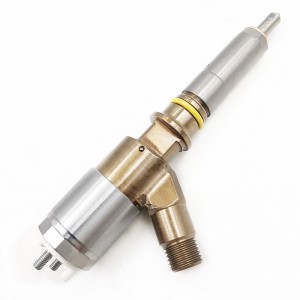Hot Sale Solenoid Valve 294200-9972 Electrovalve for VE Pump Automotive Engine Fuel Parts
Products Description
| Reference Codes | 294200-9972 |
| Application | / |
| MOQ | 6 PCS |
| Certification | ISO9001 |
| Place of Origin | China |
| Packaging | Neutral packing |
| Quality Control | 100% tested before shipment |
| Lead time | 7~15 working days |
| Payment | T/T, L/C, Paypal, Western Union, MoneyGram or as your requirement |
Solenoid Valve Common Failures
Electrical Failure
Coil short-circuit or disconnection: After long-term use, the insulation layer of the solenoid coil may be aging and broken, resulting in short-circuit of the wires inside the coil in contact with each other, or the wires are disconnected to form a disconnection. In addition, unstable power supply voltage, too high or too low, may also make the coil overheating burned, resulting in short circuit or disconnection failure, so that the solenoid valve can not work properly.
Loose plug or poor contact: The plug connected to the solenoid valve may become loose due to vehicle vibration, poor installation, etc., resulting in poor contact. This will make the solenoid valve can not receive a stable control signal and power supply, work abnormally, such as sometimes normal work, sometimes can not act.
Control circuit failure: the control circuit of the oil pump solenoid valve may exist in the relay failure, blown fuse, broken or short-circuit wiring and other problems. These faults will affect the transmission of control signals, so that the solenoid valve can not work properly according to the instructions of the ECU, such as the solenoid valve can not be opened or closed, or open and close the timing is not accurate.
Mechanical Failures
Spool stagnation: impurities and dirt in the fuel may enter the solenoid valve and adhere to the surface of the spool, or due to wear and deformation of the spool after long-term use, resulting in the spool not being able to move flexibly in the body of the valve, resulting in the phenomenon of stagnation. Stuck spool will make the solenoid valve can not be opened or closed normally, thus affecting the fuel supply and cut-off.
Spring Failure: The spring inside the solenoid valve is used to reset the spool in the event of a power failure. The spring may be fatigued, deformed, weakened or even broken due to long-term use, resulting in the spool not being able to reset in time and accurately, making the solenoid valve close poorly or open poorly, affecting the normal operation of the fuel system.
Seal aging or damage: solenoid valve seals such as seals, gaskets, etc., in the long-term fuel immersion and high temperature environment, easy to appear aging, hardening, rupture and so on. Damaged seals will lead to fuel leakage, which on the one hand will cause fuel waste, and on the other hand will make the pressure of the fuel system unstable, affecting the normal work of the solenoid valve, and may even lead to fire and other potential safety hazards.
Performance Failures
Slow response: Due to the deterioration of the performance of the solenoid coil and the increase of friction between the spool and the valve body, the solenoid valve may have the problem of longer response time. When the engine needs to adjust the fuel supply quickly, the solenoid valve cannot be opened or closed in time, resulting in sluggish power response, poor acceleration, and other problems that affect the engine's performance.
Excessive leakage: Under normal circumstances, the fuel pump solenoid valve should have only a very small amount of fuel leakage in the closed state. However, if the precision of the fit between the valve spool and the valve seat decreases, the sealing surface is worn or damaged, it will lead to an increase in the amount of leakage. Excessive leakage will prevent the fuel system pressure from remaining stable, affecting the accuracy of fuel injection and leading to problems such as inadequate engine combustion, increased fuel consumption, and excessive exhaust emissions.
Misoperation: When the solenoid valve is subjected to external electromagnetic interference, control signal error or internal circuit failure, a misoperation situation may occur, i.e., the solenoid valve carries out the corresponding action when it does not need to be opened or closed. This will lead to abnormal fuel supply, causing the engine to jitter, stall and other faults, seriously affecting the normal operation of the engine.























